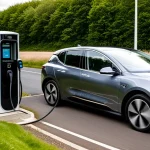Understanding Energy Efficiency
In today’s world, energy efficiency plays a pivotal role in reducing environmental impact and lowering utility bills. Fundamentally, it involves using less energy to perform the same task, thus eliminating energy waste. The benefits of energy efficiency are both environmental and economic. Environmentally, it leads to fewer emissions from fossil fuels, thereby contributing to cleaner air and mitigating climate change. Economically, increased efficiency can result in significant energy savings for households and businesses.
Common misconceptions about energy-saving measures often revolve around the assumption that significant investments are required to see benefits. However, there are numerous energy saving tips that are simple, cost-effective, and can be easily implemented in day-to-day life. By understanding and addressing these misconceptions, individuals and businesses can harness the full potential of energy-efficient practices.
Also to see : How can you integrate local art into your UK home’s decor?
Insulation Improvements
Investing in home insulation is crucial for energy conservation. Proper insulation minimizes heat transfer, keeping homes warm in the winter and cool in the summer. By reducing the reliance on heating and cooling systems, insulation directly contributes to lowering energy consumption and costs.
Types of Insulation
There are various types of insulation available, each with unique properties and R-values—a measure of thermal resistance. Common options include fiberglass, cellulose, foam board, and spray foam. Fiberglass is often preferred for its affordability and effectiveness; cellulose, made from recycled paper, is eco-friendly; foam board provides high insulation per inch of thickness; and spray foam seals gaps for superior air barrier performance.
Also read : What are effective strategies for organizing a UK home efficiently?
Benefits
The benefits of insulation upgrades extend beyond energy savings. Enhanced comfort, improved indoor air quality, and noise reduction are significant advantages. Additionally, because insulation improvements often offer quick return on investment, they are a smart choice for homeowners aiming to boost energy efficiency.
Cost-Effectiveness and Return on Investment
While costs vary depending on material and installation, insulation improvements typically pay for themselves within a few years through savings on utility bills. This cost-effectiveness makes insulation a key component of energy efficiency strategies for any home or building.
Energy-Efficient Appliances
Choosing energy-efficient appliances is a practical step towards boosting overall energy efficiency at home. An appliance earns the Energy Star rating when it meets stringent guidelines set by various authorities, including being at least 10% more efficient than standard models. This label signifies substantial energy savings, leading to reduced utility bills.
Appliance upgrades that can significantly enhance energy efficiency include replacing old refrigerators, washing machines, and dishwashers with Energy Star-rated models. These upgrades not only cut utility costs but also decrease your carbon footprint. For instance, an Energy Star refrigerator can save up to 15% in energy compared to non-certified models.
The impact of energy-efficient appliances on utility bills is direct and measurable. By opting for these smart choices, households can enjoy an immediate reduction in energy consumption and associated costs, thus making a considerable difference over time.
Renewable Energy Options
In the realm of renewable energy, homeowners have a growing array of options to explore, two of the most popular being solar energy and wind energy. These sources are pivotal for the transition towards sustainable living, providing clean power which significantly reduces carbon footprints.
One of the most accessible forms of renewable energy for residential use is solar energy. Installing solar panels enables households to harness the sun’s power, converting it into electricity. The benefits are substantial, including decreased reliance on fossil fuels and lower utility bills. Moreover, many regions offer financial incentives and rebates for solar panel installations, making it a more attractive investment. However, challenges such as initial setup costs and the need for ample sunlight exposure can be hurdles for some homeowners.
Wind energy is another viable option, though less commonly utilized in urban residential settings due to spatial requirements and zoning restrictions. For those in rural or windy areas, small-scale wind turbines could be a beneficial and eco-friendly choice, adding diversity to the home’s energy sources.
Ultimately, when adopting renewable energy sources, it’s important to weigh the financial incentives offered by government grants or local initiatives, which can offset initial costs and expedite returns on investment, encouraging a broader adoption of these clean technologies in homes.
DIY Renovations for Energy Efficiency
Engaging in DIY renovations can be a rewarding way to boost your home’s energy efficiency. With a few simple tools and some know-how, you can make impactful home improvement projects that conserve energy and lower utility bills.
Easy DIY Upgrades
Consider starting with some quick energy-saving upgrades like sealing drafty windows or adding weather stripping around doors. These types of renovations can prevent valuable heat from escaping during colder months and keep cool air indoors when it’s hot outside. Sealing windows not only improves comfort but also cuts down on the workload for your heating and cooling systems.
Tools and Materials
For effective renovations, you’ll need basics like caulk, a caulking gun, weather stripping, insulation film, and possibly a screwdriver or power drill. These resources make it easy to execute projects without the need for professional assistance. By preparing these tools before starting, you optimize your time and maximize the energy savings realized.
Financial Benefits
Participating in DIY projects can result in substantial cost savings. While the materials have an upfront cost, the reduction in heating and cooling expenses accumulates over time, making these investments fruitful. By integrating energy-saving upgrades into your renovation plans, you not only enhance your home’s efficiency but also bolster its value.
Optimizing Heating and Cooling Systems
Proper management of heating systems and cooling systems is essential for maintaining HVAC efficiency. Regular maintenance ensures these units operate at peak performance, ultimately saving energy and reducing utility bills. Maintenance tasks include cleaning or replacing air filters every few months and ensuring vents are unblocked to allow free airflow.
For enhanced efficiency, optimizing settings on HVAC units is key. During winter, setting the thermostat to a slightly lower temperature when you’re not at home can reduce energy usage. In the summer, keeping the cooling system set a few degrees higher when you’re away can achieve similar results.
Smart thermostats offer substantial benefits by automatically adjusting temperature settings based on your schedule and preferences. They provide a user-friendly interface and the ability to control heating and cooling remotely through smartphones. This technology not only improves comfort but also contributes to significant energy savings by minimizing unnecessary usage.
Incorporating these strategies not only enhances HVAC efficiency but also extends the lifespan of the systems, providing both immediate and long-term economic benefits. Regular attention and smart upgrades can convert a basic heating and cooling setup into a high-efficiency powerhouse in your home.
Additional Tips and Strategies
As technology advances, adopting smart home technology offers a tremendous boost in enhancing energy efficiency. Smart devices such as programmable thermostats, LED bulbs, and energy monitoring systems allow homeowners to manage and optimize energy use seamlessly. By integrating these technologies, you can significantly reduce energy waste and lower utility costs.
Incorporating sustainable practices into everyday routines further amplifies energy savings. Simple actions like turning off lights when leaving a room, using natural light when possible, and unplugging electronic devices that aren’t in use contribute to reducing energy consumption. These practices not only conserve energy but also foster a more eco-conscious lifestyle.
Long-term planning plays a pivotal role in maintaining energy efficiency in the home. Regularly updating insulation, appliances, and other energy-related systems ensures that they operate at peak efficiency. Incorporating energy audits can help identify areas for improvement, guiding homeowners in making informed decisions about future enhancements. This proactive approach ensures sustained energy efficiency, environmental stewardship, and economic savings over time.









